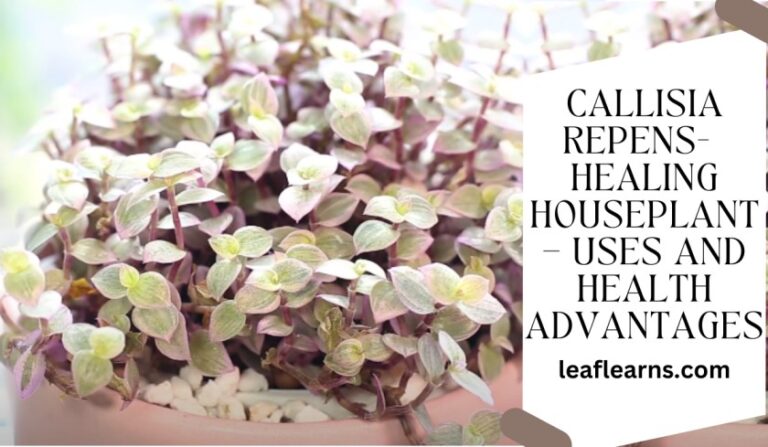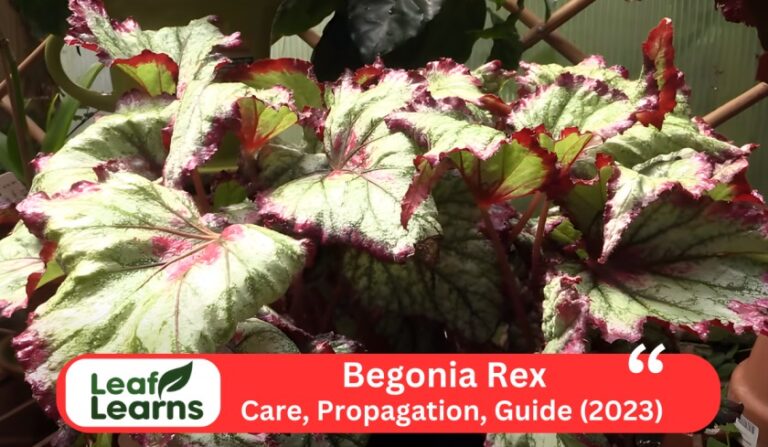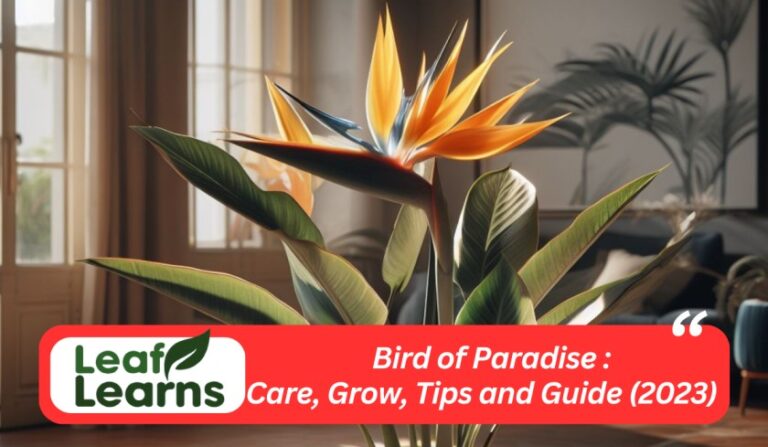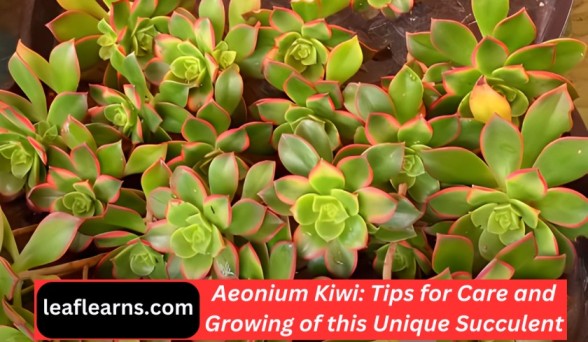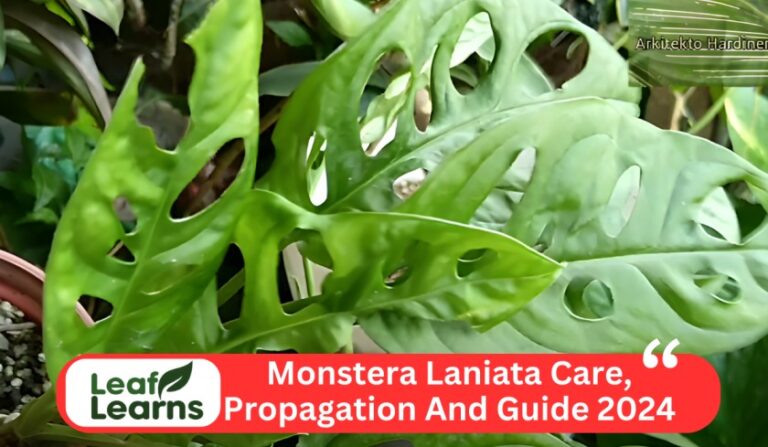Ponytail Palm Care, Grow, Tips, and Guide (2023)
The Ponytail Palm scientifically called Beaucarnea recurvata. It is a member of the Asparagaceae family and its originate from the Mexico and Central America. This plant more succulent with its dark green. And this plant having slender leaves and these leaves can reach up to 6 feet in length and are only 1 inch wide which makes it beautiful for the indoor spaces.
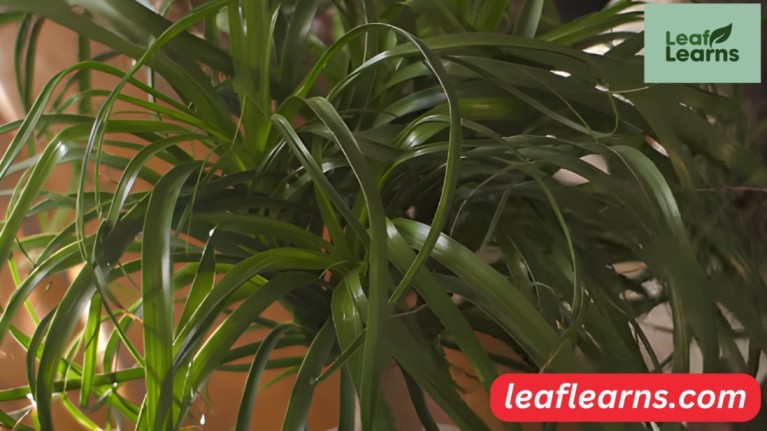
It can placed in temperatures ranging from 65°F to 80°F (18°C to 27°C) and required low humidity. It also required low pruning and it can prefers bright, indirect sunlight, and a well draining cactus or succulent mix. This Ponytail Palm have drought-tolerant nature, this plant can reach a towering height of 10 to 20 feet (3 to 6 meters) over time.
This plant can only propagate by seeds and offsets, but be vigilant against common pests like mealybugs and spider mites. Additionally, when it blooms, the plant can produces creamy yellow flowers which can makes it more beautiful in the indoor spaces.
| Common name | Ponytail-Palm |
| Scientific Name | Beaucarnea recurvata |
| Family | Asparagaceae |
| Distribution | Mexico and Central America |
| Plant type | Succulent, semi-succulent |
| Size | 10 to 20 feet (3 to 6 meters) |
| Leaf Colour | dark green |
| Leaf size | up to 6 feet long and only 1 inch wide |
| Temperature | 65°F to 80°F (18°C to 27°C) |
| Humidity | Low |
| Pruning | Minimal pruning required; remove dead or yellow |
| Light requirement | Bright, indirect sunlight |
| Soil requirement | Well-draining cactus or succulent mix |
| Watering Need | Low (Drought-tolerant) |
| Propagation | Seeds, offsets (pups) |
| Flower colour | Creamy yellow |
| Pests | mealybugs, spider mites |
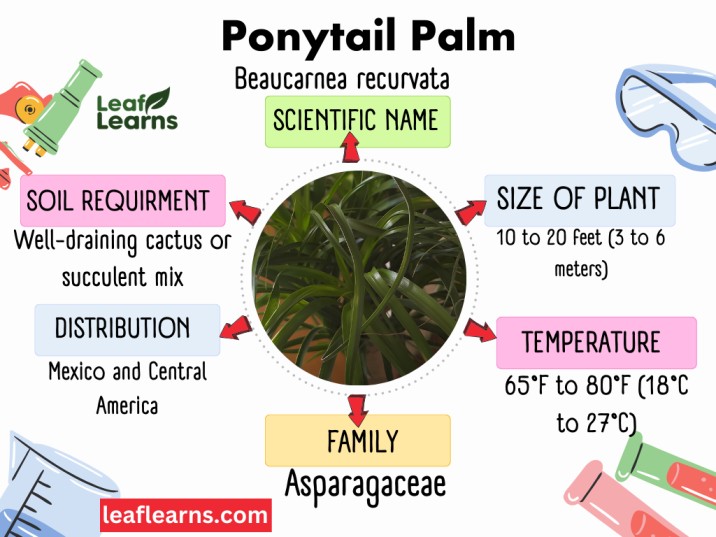
Contents
- 1 Top Care Tips
- 2 Care for Ponytail Plam
- 3 Pruning
- 4 Growth Rate and Size
- 5 Propagating Ponytail Palm
- 6 Repotting
- 7 Flowering and Foliage
- 8 Overwintering
- 9 Common Pests
- 10 Plant Diseases
- 11 How to Get Beaucarnea recurvata to Bloom
- 12 Problems and Solutions
- 13 Pets
- 14 Varieties/Types
- 15 Toxicity of Ponytail Palm
- 16 Ponytail Palm Appearance
- 17 Suggested Uses
- 18 Beaucarnea recurvata and Pet Safety: Are They Safe for Cats?
- 19 Caring for Your Indoor Beaucarnea recurvata: Repotting, Trimming, and Reviving
- 20 Conclusion
- 21 FAQs
Top Care Tips
Light: Make sure your Ponytail-Palm receives enough of direct, bright sunshine. While it can handle moderate sunshine, it should stay away from harsh, burning rays.
When watering, let the soil entirely dry out in between applications. Water carefully since excessive irrigation might cause root rot. It can withstand drought.
Use a well-draining cactus or succulent mix in the soil to avoid waterlogging and encourage strong root development.
Maintain temperatures between 65 and 80 degrees Fahrenheit (18 and 27 degrees Celsius). Keep the plant out of the chilly draughts and frost.
Pruning: Only slight pruning is necessary. To keep the plant looking its best and to promote new development, remove dead or yellowing leaves as needed.
Care for Ponytail Plam
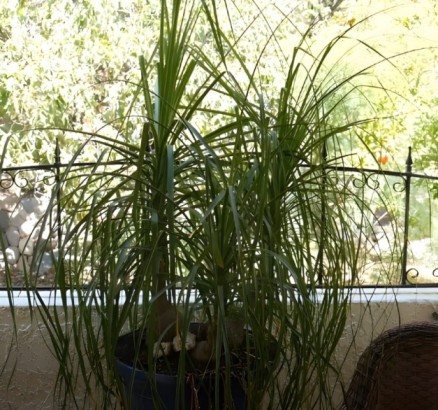
Light Requirement
Considers how much light, or how much sunshine, your Beaucarnea recurvata needs to thrive in order to take proper care of it. Consider your plant to be like Goldilocks; it doesn’t like the dark or too much direct sunshine since such conditions might make it excessively hot.
Therefore, the best place to put it is where it receives bright light but not direct sunlight, similar to when you sit in the shade on a sunny day.
Just keep in mind that it doesn’t like gloomy places or direct sunlight, so look for the ideal location with just the correct amount of illumination.
Water Requirement
It is simple and quick to water a ponytail pplant. Just keep in mind that less is more because this plant doesn’t enjoy damp feet. Between waterings, allow the top inch or two of soil to totally dry out. If the soil feels dry when you stick your finger into it, it’s time to water.
Water sparingly, every two to four weeks, during the growing season, which includes the spring and summer.
Reduce watering even more during the cooler months, maybe to once a month or less. Always check the pot for drainage holes to avoid standing water at the bottom, which can cause root rot. So keep it straightforward: let it dry before giving it a drink.
Soil Requirement
Make sure to acquire the ideal soil for your Beaucarnea recurvata in order to take good care of it. Use soil that drains properly, such as that for succulents or cactus.
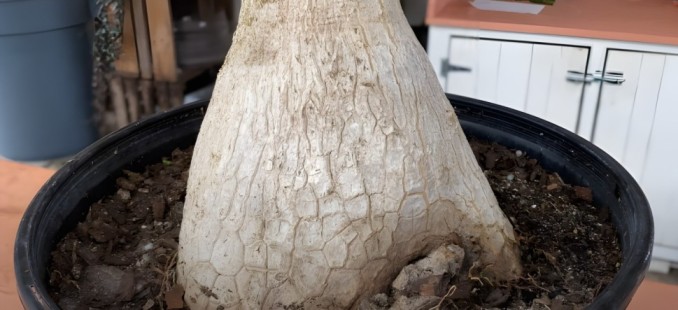
Thus, water won’t become trapped and cause the roots to decay. Between waterings, keep the soil just barely dry, and expose it to bright yet temperate sunshine. You shouldn’t use too much water because it doesn’t require much.
Temperature Requirement
Ponytail-Palms prefer Goldilocks-style conditions that are just right—not too hot or too cold. They are happiest when the temperature is between 18°C and 27°C (65°F and 80°F).
For us, that seems like a cozy room temperature. Maintain their warmth and protect them from icy draughts. Remember that they dislike ice, so don’t subject them to extreme cold.
Humidity Requirement
The Beaucarnea recurvata is a low-maintenance plant that requires a dry environment with little humidity. As a result, you won’t have to worry too much about the humidity of the air.
It even thrives in low humidity environments. As a result, you may install it in your house without adding more moisture to the air. You may have a happy and healthy Ponytail-Palm as long as you remember to let the soil dry out between waterings.
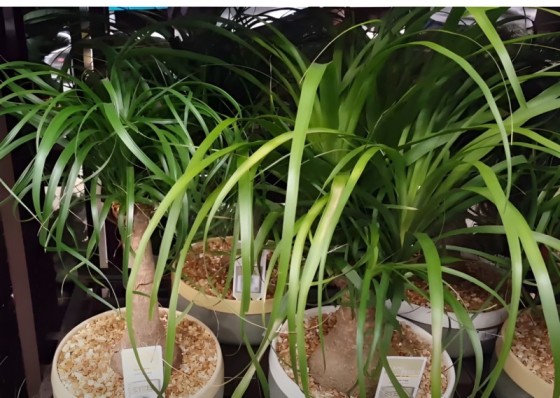
Fertlizer Requirement
Keep in mind that your Beaucarnea recurvata doesn’t require a lot of food when caring for it. Keep things basic when it comes to fertilizer.
Only feed your plant during the growing season, which is normally spring and summer, with a balanced liquid fertilizer. Keep it simple; little is more. Your plant may suffer if you use too much fertilizer.
Potting Requirement
To avoid water ponding, use a pot with drainage holes. To maintain healthy roots, use well-draining soil, such as cactus mix.
Pick a pot that is somewhat larger than the plant’s existing pot rather than going for a large one right away. Repot plants in the spring or when they exceed their container.
Keep in mind that Beaucarnea recurvata want to be somewhat root-bound. These potting suggestions can help this easy-going plant flourish.
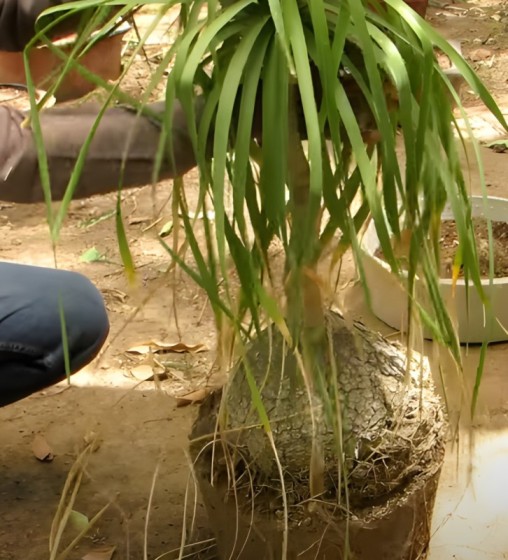
Pruning
Giving your Ponytail-Palm a trim haircut is similar to pruning it. To maintain a neat and healthy appearance, remove any leaves that are dead or yellow. Just concentrate on the damaged areas because these plants don’t require much trimming.
Snip just above the base or trunk. It is comparable to pruning a tree’s old, dead branches. Pruning is like getting a new haircut for yourself, it promotes healthier growth and a more attractive appearance for your plant!
Growth Rate and Size
In contrast to a hare, the Beaucarnea recurvata develops quite slowly. It grows slowly over time. It may grow to a height of between 3 and 6 metres (10 to 20 feet) when fully mature.
Therefore, it won’t quickly overrun your space. Simply exercise patience as it eventually grows into a large and striking interior or outdoor plant.
Propagating Ponytail Palm
Seeds: Plant Ponytail-Palm seeds if you’re starting from scratch. But bear in mind that it can take some time for them to sprout and develop into full-grown plants. In this strategy, patience is essential.
Offsets (Pups): This approach is speedier and more typical. At the base of the plant, the Beaucarnea recurvata may develop offsets or tiny branches as it ages.
To develop into new plants, they may be carefully separated and potted. Make sure the offset has some roots, and allow it to grow in soil that drains properly.
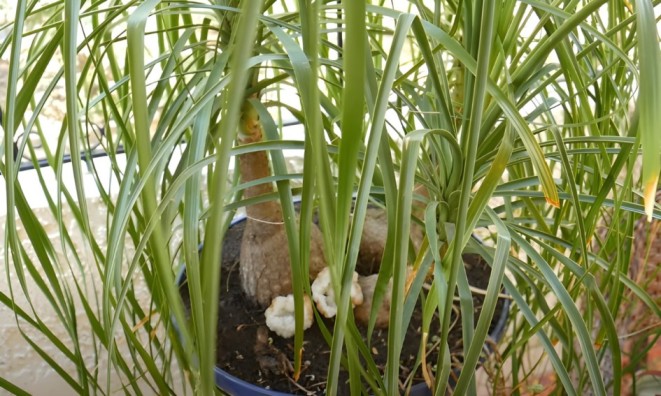
Repotting
Moving a Ponytail-Palm to a new, larger pot is known as repotting. Every two to three years, or whenever you find the plant has outgrown its present container, you should think about repotting.
These plants prefer small places, so pick a container that is only a little bit bigger than the existing one.
Shake off any extra dirt before carefully removing the plant from its old pot. Put it in the brand-new container with some new, drained soil. Let it settle into its new habitat and give it a little water.
Flowering and Foliage
This plant is renowned for its distinctive looks. It doesn’t bloom regularly, but when it does, the blooms are a lovely creamy golden color.
These blossoms give its long, thin, dark green leaves—which may get quite long, up to six feet long a touch of beauty.
It is, therefore, a chic and fashionable plant to have around even if it is not well recognized for its flowers.
Overwintering
Taking extra care of your Beaucarnea recurvata throughout the colder months is necessary if you want to overwinter it. Keep it indoors, away from chilly draughts, in a warm location.
The plant dislikes cold, damp roots, so water it less frequently and allow the soil dry out more in between applications. To prevent chilly droughts, if you’ve put it close to a window, make sure it’s not too close.
Common Pests
Mealybugs and spider mites are frequent pests of Beaucarnea recurvata. These small creatures may annoy your plant. Mealybugs appear as fluffy, white spots, whereas spider mites produce fine webbing.
Both of them consume the plant’s fluids, turning the leaves yellow and sickly. You can use neem oil or a moist towel to gently wipe these pests away.
Plant Diseases
Beaucarnea recurvata could have certain health problems, such as yellow or brown foliage. Remember to allow the soil dry out between waterings to prevent this from happening if they receive too much water.
They may also be bothered by insects like mealybugs and spider mites. Avoid overwatering your plant and look for any little pests to maintain it healthy.
Regular maintenance, such as providing your plant with the right light and drained soil, may keep it healthy and vigorous.
How to Get Beaucarnea recurvata to Bloom
The process of getting your Ponytail-Palm to blossom may be satisfying. While it may take many years for them to blossom, you may stimulate flowering by giving them the proper care.
You should make sure your plant receives adequate amounts of indirect sunshine, appropriate watering (leave the soil dry out between waterings), and well-draining soil.
Maintain a constant temperature of between 65°F and 80°F (18°C and 27°C), and refrain from making rapid temperature swings.
Avoid over fertilizing as well since this might prevent flowers from blooming.
Problems and Solutions
Problem: Yellowing leaves and drooping
Solution: Allowing the soil to dry out between waterings can ensure optimum watering. You should also reduce light exposure to avoid harsh sunshine.
Problem: Root rot due to overwatering
Solution: Water sparingly, make sure the soil drains well, and constantly empty the saucer underneath the pot to avoid water buildup.
Problem: Pest infestations (mealybugs, spider mites)
Solution: Check your plant frequently for bugs, and use neem oil or insecticidal soap to eliminate infestations.
Problem: Stunted growth
Solution: Give the plant enough light, don’t crowd it, and repot it if its roots start to get entangled.
Problem: No blooms
Solution: To stimulate eventual flowering, exercise patience and maintain healthy growing circumstances, such as light, temperature, and little fertilisation.
Pets
Keep your plant secure if there are animals nearby, such as cats and dogs. Dogs and cats may be inquisitive and occasionally like chewing on plants.
The good news is that these cuddly pals are not poisoned by Beaucarnea recurvata. So it won’t hurt your dog or cat if they nibble.
The Ponytail-Palm can become stressed from gnawing, so it’s still a good idea to keep a watch on your dogs and prevent them from harming the plant.
Varieties/Types
Regular Ponytail-Palm (Beaucarnea recurvata): This is the standard plant that you frequently see. It features long, thin, green leaves that gracefully arch and a bulbous trunk that resembles the foot of an elephant.
Ponytail-Palm ‘Ponytail’: This variant seems more fragile since its leaves are even longer and thinner. It has more narrow leaves than the typical tree does.
Ponytail-Palm ‘Ponytail Dwarf’:This plant is for you if you want a more compact kind. It’s a more manageable, smaller variant that stays shorter.
Ponytail-Palm ‘Madagascar’: This kind has unusually textured leaves that are thicker. Despite not being from Madagascar, it is occasionally referred to as the Madagascar Palm.
Ponytail-Palm ‘Ponytail Long Leaf’: This type stands out in a crowd due to its very lengthy leaves, as the name indicates.
Toxicity of Ponytail Palm
Both people and animals can safely use the Beaucarnea recurvata. Given that it is non-toxic, you don’t have to be concerned if your curious cats or dogs nibble on its leaves or trunk.
As a result, you can enjoy its distinctive beauty without having to worry about toxicity, making it a fantastic choice for families with pets or small children.
Just keep in mind that, even though it won’t hurt them, you should try to prevent your pets from chewing on any indoor plants
Ponytail Palm Appearance
This plant may be identified by its distinctive look. It resembles a little tree with a bloated, bulbous trunk like the foot of an elephant.
It gets its name from the way its long, thin, dark-green leaves fall down, giving it a whimsical ponytail-like appearance. The leaves are barely around an inch broad and can grow up to 6 feet long.
Due to its endearing look, this plant is a popular option for gardens and homes since it adds a touch of desert beauty to any setting.
Suggested Uses
- Indoor decor: Use the Ponytail-Palm as a houseplant to infuse your interior design with a touch of the tropics.
- Bring a low-maintenance green friend to your working space to spruce up the atmosphere there.
- Patios and balconies: For a distinctive and hardy outdoor plant, decorate outdoor areas with potted Beaucarnea recurvata.
- Plant it in dry gardens to conserve water and make a landscape with a desert motif.
- Plant for Beginners: Because of its flexibility and ease of maintenance, it is perfect for beginning gardeners.
- Use as accents or focal elements in different garden designs with aesthetic embellishments.
Beaucarnea recurvata and Pet Safety: Are They Safe for Cats?
This plant are a popular indoor plant choice, but many pet owners are concerned about their safety around cats. It’s crucial to know that cats are typically not thought to be harmed by ponytail-palms, according to the ASPCA.
Nevertheless, it’s still a good idea to watch out for your cat near the plant because some cats could be intrigued and might accidentally knock it over or dig into the dirt. You may put this plant in a spot that’s out of your cat’s reach to protect the safety of both your plant and your cat.
Caring for Your Indoor Beaucarnea recurvata: Repotting, Trimming, and Reviving
Caring for a ponytail-palm involves various aspects, such as repotting, trimming, and maintaining the right environmental conditions. To keep your plant healthy, you should repot it every few years as it grows, using well-draining soil and a pot with drainage holes.
Trimming should be done sparingly, mainly to remove dead or yellowing leaves. If you ever notice your plant looking worse for wear, you can learn how to revive a seemingly dead one by adjusting your care routine. Ensure your plant gets enough light, but it can tolerate low light conditions as well.
Proper watering is essential; allow the soil to dry out between waterings. Remember, while caring for a Beaucarnea recurvata may seem like a challenge at first, it can be a rewarding addition to your indoor plant collection.
Conclusion
Taking care of your Ponytail-Palm is similar to achieving the ideal balance in a Goldilocks narrative. To be content and healthy, it need the ideal quantity of sunlight not too much, nor too little.
Let the soil dry up in between waterings, especially during the growth season, since less is more when it comes to watering. Selecting the proper soil is essential, so choose for a combination that drains well. Maintain a comfortable temperature range of 65°F to 80°F (18°C to 27°C).
Similar to giving your plant a tidy haircut, just minimal trimming is necessary. Remember that Beaucarnea recurvata are non-toxic, making them a great choice for households with children or pets.
FAQs
What is the ideal light condition for a Ponytail Palm?
Ponytail-Palms thrive in bright, indirect sunlight. Avoid intense, scorching rays.
How should you determine when to water your Ponytail Palm?
Between watering, let the top inch or two of the soil totally dry out. If the soil feels dry when you stick your finger into it, it’s time to water.
What type of soil is best for Ponytail Palms?
The best soil for cacti and succulents is well-draining to avoid waterlogging and encourage strong root development.
What is the recommended temperature range for Ponytail Palms?
To keep them healthy, keep the temperature between 65°F and 80°F (18°C and 27°C). Keep them away from draughts and frost.
How often should you prune a Ponytail Palm?
Pruning is only a little needed. To preserve its look and promote new development, remove any dead or yellowing leaves as needed.
What is the preferred humidity level for Ponytail Palms?
Ponytail-Palms thrive in low humidity conditions and prefer drier air.
When should you use fertilizer for your Ponytail Palm?
In the spring and summer, while your plant is growing, feed it with a balanced liquid fertilizer. Do not over fertilize.
What is the suggested potting method for Ponytail Palms?
Use well-draining soil (like cactus mix), pick a pot with drainage holes, and go with a pot that is just a little bit bigger than the plant’s present container. If it outgrows its pot or in the spring, repot.

